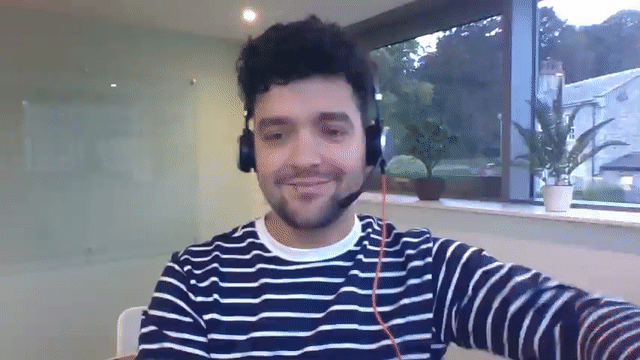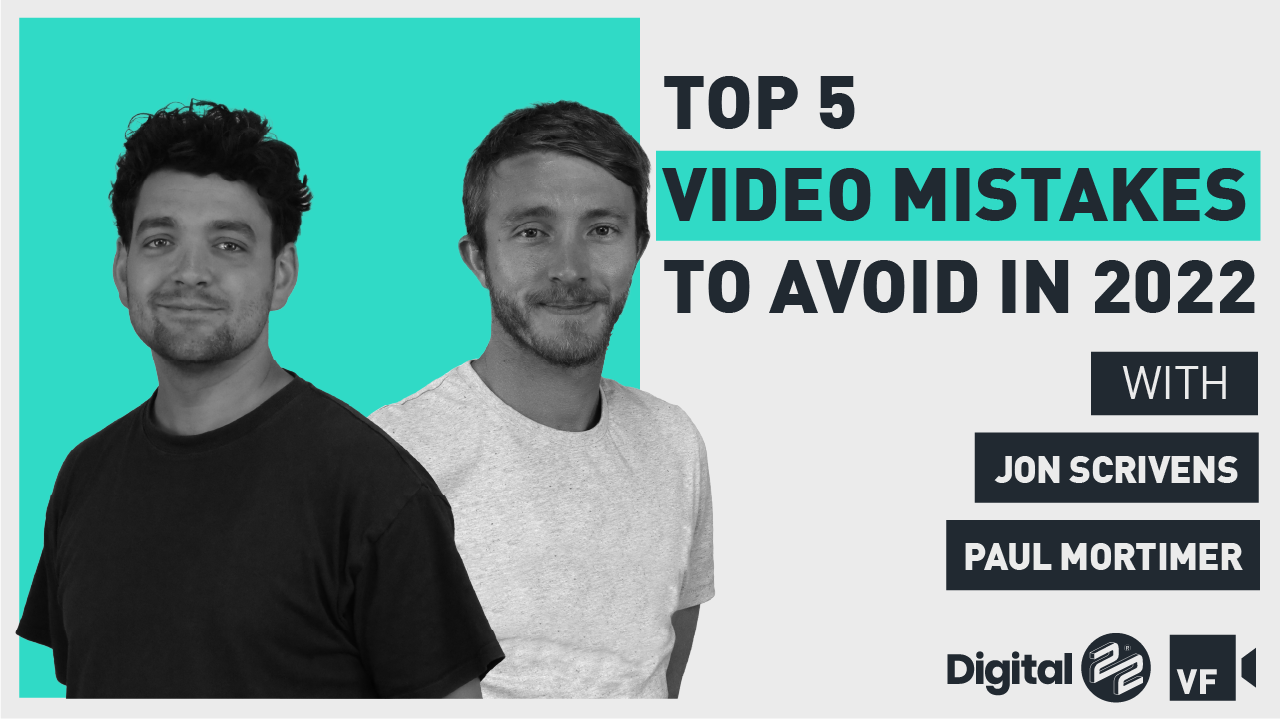By now, as a marketer, I'm gonna assume you understand why video marketing is so powerful. But some...
There’s no shying away from the fact that your written content is always going to be important. What’s equally as essential is that you now incorporate inbound video into your marketing strategy if you want to take your effort to that all-important next level. Although video marketing isn’t anything new, the importance of inbound video within every marketing channel is something that should be given a lot more focus. So, find out how important it is and how you can do it yourself.

To make this easier to digest, we’re breaking this blog down into two sections. Just click on one of the headings below to find out more.
- The Importance of Inbound Video
- How to Get Started
The importance of inbound video
Just like your inbound marketing efforts, don’t create videos for the sake of it. Although you’re probably falling behind if you haven’t already started utilising video in your marketing strategy, it doesn’t mean that it’s too late to get started.
"In 2019, 80 percent of internet traffic will come from video while 13 percent of all internet traffic will consist of live video in 2021."
The rise of inbound video started back in 2016 and the popularity has only increased. So, make sure you give it a lot more importance heading into 2019 and beyond. One of the primary reasons behind this is that a study from HubSpot Research has shown that over 50 percent of consumers want to see videos from brands.
This also means these same consumers want to see video more than any other type of content. More than emails, newsletters, social images or even content in a PDF form to download and read later.
It’s not just for entertainment purposes either, and that’s where the inbound focus comes in.
- 90 percent of customers say videos help them make buying decisions.
- Video on landing pages is capable of increasing conversion rates by 80 percent.
- Mentioning the term ‘video’ in email subject lines increases open rates by 19 percent.
- There are four times more buyers that prefer to watch a video about a product than those that prefer to just read about it.
- 64 percent of clients often buy a product online after watching a video about it
Source: DepositPhotos.com
The same source has also suggested that in 2019, 80 percent of internet traffic will come from video while 13 percent of all internet traffic will consist of live video in 2021.
When you consider that 500 million people are watching Facebook videos every day - according to Tubular Insights - it shows that inbound video needs to be at the top of your marketing agenda and not just an afterthought.
It’s clear to see where inbound video fits in, but it’s not all about brand awareness. It perfectly slots into the new Flywheel as videos help the way you can connect with prospects and convert them while you can also support and delight customers through inbound video.
Think of the wider picture with inbound video strategies. They can help throughout the entire Buyer’s Journey - even as far as sales teams, believe it or not, as the video analytics can help them identify the best or worst leads so it’s not just about adding video to your strategy for one particular area.
Your content needs it as you need to give your audience more than just one option: reading content.
While that’s important, they’re not always going to have time to read blogs whereas a one-minute alternative of watching a video can get the message across and solve pain points much quicker

How to get started
Before rushing off to buy the most expensive video equipment possible, take in something important HubSpot Research has found.
According to their study, 2018 saw a demand for more raw and authentic video. They found that consumers and customers prefer lower quality videos that are more authentic as opposed to high-quality videos that give off an artificial and unauthentic vibe.
Just like you build trust and authority with your written content, the same can be said for your video content.
What this means is that you don’t need to go over your budget and see whether you’re able to afford getting started with inbound video. As long as you have the skills within your team and suitable equipment, it should be enough to confidently hit record and get started.
What you’ll need
Other than a dedicated video team or editor, you’re going to need the relevant equipment to get started. Check out the following as a starting point.
- Cameras: DSLR, mid-level cameras or even an iPhone.
- Basic Equipment: Tripod, SD cards and batteries.
- Audio Equipment: Microphones and software such as Adobe Premiere Pro.
- Lighting: Light stands.
That doesn’t mean you should go and search for the best DSLR on the market. They’re professional cameras and need relevant training. Mid-level cameras are considered the link between your basic cameras and the more advanced cameras - so they can be a good option.
They’re ideal if you’re 100 percent invested in inbound video but don’t want all of the technical specifics and want to just hit record instead. However, there’s nothing wrong with getting started on newer models of the iPhone.
Also, make sure you think about where else you’re going to host your videos. While they’ll be beneficial to have on your website, hosting them on platforms like Vimeo and YouTube not only makes it easier to embed in the future but also gives viewers an alternative to finding your inbound video content. Personally, we use Vidyard and HubSpot as our central hosting platform, before posting on YouTube a few weeks later (this helps us keep the SEO benefits for our own site).
Then there's the software to think about. Most assume you need to go all in on the Adobe suite, and that's fine if you have the time, patience and accessibility to spend time learning about how software such as Premiere Pro works.
However, there are many more accessible tools out there now that allow you to create professional videos right from your browser, such as Canva's free online video editor. That means no breaking things in Adobe, no sitting through hours and hours of Skillshare videos where your videos never see the light of day and actually being able to spend time using simple tools to create remarkable videos that leave an impact.
Whether it's functional features, transitions, voiceovers and everything in between, this type of video editor is a lifesaver for wherever you are in your video-creating journey.
There are plenty of useful features built-in that can let you create professional videos while add-on equipment can also be bought to take your video content to a new level. Everyone needs a place to start and that learning curve is much smoother when you start smaller and work your way up.
Types of videos to film
There’s no right or wrong answer when it comes to what you want to film. Although, keep in mind that you need to create quality content over quantity and videos that viewers will actually get plenty of value from.
About Us
This is a great, alternative way to introduce your company and team. It’s an opportunity to give an overview of your company, what you do, your mission, your services and more. It’s all to build awareness around your company and to intrigue and attract your target audience.

Meet the team
Visitors that are thinking about working with you will obviously take up the option to see who is doing all of the hard work behind the scenes. Putting a face, voice and personality to a team member can help build a relationship with your visitors.
What we do/Demo videos
Showing your product or service in action can help tip a visitor over the edge to get in touch with you. It can range from a virtual tour of the software or even an unboxing. It just helps to give off a more transparent vibe to make them feel more at ease.
Event videos
If you’re regularly hosting or attending events, then record them as well. They’re great resources to include on your website which can act as a useful knowledge base for visitors as well as building authority.

How-to videos
Rather than writing out a 5,000 blog post, how-to videos can be used to teach your viewers something new. It’s also a chance for visitors to understand what it is you do and how you have solutions to their problems - rather than reading a big chunk of text for each topic.
These are just a handful of videos you can begin shooting right away. To read more about each one in more depth and find out which other videos you can utilise, such as podcasts and live videos, then head over to this blog.
By adopting video in every area of our business we've seen first hand the importance and impact it can have.
To check out some quick and easy ways to include personalised video into your marketing mix click the link below...
Tips on filming inbound videos
Different types of videos will need planning differently. For example, a short explainer video might only be through the webcam on your laptop, while a much bigger project will need more planning. Either way, follow the useful tips below so you know how to get started when filming your own inbound marketing videos.
- Create Storyboards and Shot-Lists: This helps you figure out exactly what shots you need before filming.
- Prep Video Subjects: If you’re standing behind the camera and hitting record, make sure everyone in the video what’s expected of them so they know what they’re doing and talking about.
- Know What B-Roll Footage You’ll Need: B-roll is footage that isn’t of your primary subject. This can include shots of satisfied customers or external office shots, for example. This is good to use when cutting away from video subjects to other footage.
- Rule of Thirds: Whenever you film, remember the rule of thirds. Although it’s a simple tip, it’s important. This technique is used to draw the eye towards main points of interest in the shot. By dividing your shot into nine equal sectors with horizontal and vertical lines, you know where viewers’ eyes will naturally gravitate towards. So by using the rule of thirds, they need to be in the middle and not drifting to the left or right of the shot. Overall, it makes for a more aesthetically pleasing shot.
- Set the White Balance: Although some cameras have an auto-white balance feature, make sure you manually set your camera’s white balance. This is a process that basically tells the camera what ‘true white’ looks like an environment to avoid colour casting.
- Check the Acoustics: Before you start filming, check the acoustics of the location in which you’re shooting. You might find an echo, for example, so you’d need to find a better location. It’s better to do this beforehand rather than realising in post-production that a faint echo has ruined the sound.
- Plan for Multiple Takes: Although we highlighted that raw footage is more authentic and it’s what people like, multiple takes are still important. This is because there might be an error in the video while it gives you an important safety net in case you notice something wrong in one of the takes.
- Don’t Overdo Effects and Transitions: Inbound video is nothing like a Year 7's First Ever PowerPoint presentation. So be smart with your effects and transitions by not going overboard. The more you randomly throw in, the more amateur-ish your videos will look which defeats the purpose of creating quality video content.
How to repurpose your inbound video content
It’s natural to assume that once your inbound videos are created and published, that’s the end of their lifespan. That doesn’t need to be the case, though, as you can continue to repurpose each video you record which can be beneficial for other marketing channels.
- Turn Videos Into an Audio Podcast: Podcasting - both audio and video - are more popular than ever. While the focus should be on video podcasts, there’s no harm in using that audio and uploading as podcasts on platforms like SoundCloud, Buzzsprout, Blubrry and more.
- Turn it Into a Blog: Video can add plenty of value to blog posts. Each time you create an informative and educational video, have your content team write up a blog post about it and embed the video. By giving visitors more options, you can engage more people.
- Create Trailers for Social Media: Although platforms like YouTube and Facebook can host long-form videos, social media accounts like Twitter and Instagram can’t. Rather than trying to fit everything into one-minute to upload inbound videos and compromising the quality, choose valuable snippets that you can upload as ‘trailers’ to entice viewers into watching the full video.
- Outtakes: Don’t drag your outtakes to the Recycle Bin. There’s something about watching people mess up that is satisfying, so your bloopers add a human touch which can get viewers sticking around for longer.
Soak up more knowledge on all things inbound marketing
With inbound video on the rise and more important than ever, it’s important to understand that it’s just one tool in a wider marketing strategy that makes up inbound marketing. There’s still a lot more you can do outside of video to boost your results and make each campaign better than the last. That’s why we’ve created a handy easy-to-read guide so you can learn more about all things inbound marketing.
There’s information on the new flywheel, the methodology and even more information regarding the rise of video marketing. Until that's ready, why not join our private Facebook Group?
We've created Inbound After Hours for marketers like you to join and share your opinions on all things Inbound Marketing. Request to join the group by clicking below.



